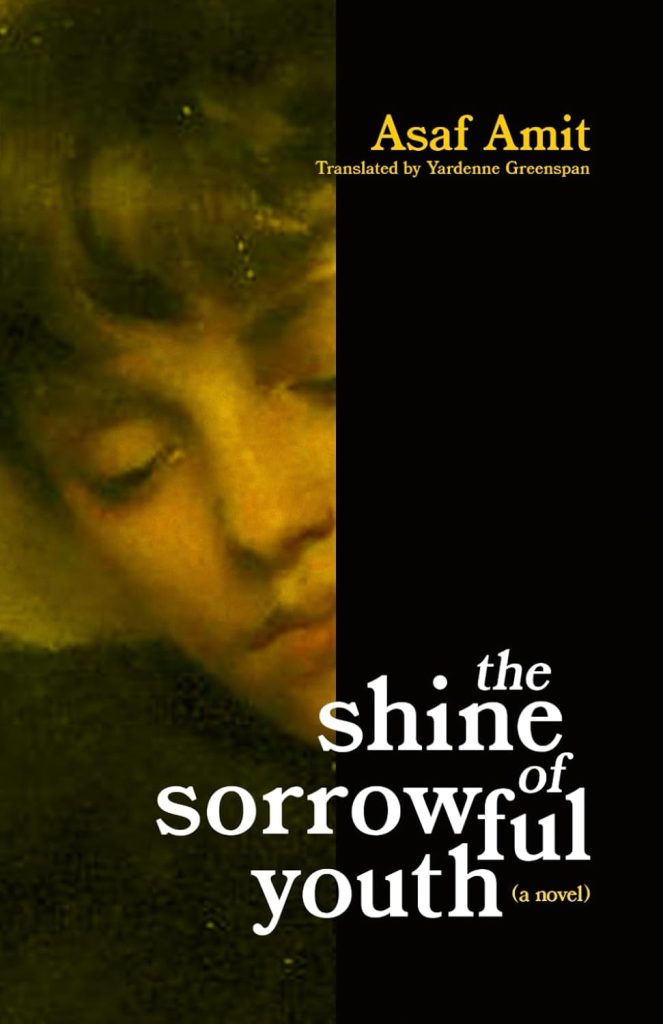Most trauma narratives concern themselves with the moment of rupture—the explosion, the scream, the unraveling. Asaf Amit is more interested in what follows: the quiet, often invisible labor of carrying on. What does life look like after the worst has already happened? How do people move through the wreckage of what once was? In The Shine of Sorrowful Youth, Amit’s debut novel, little occurs in the way of conventional drama. There are no climactic reveals, no cathartic speeches, and no insistence on closure. Instead, the book offers something far more elusive: a steady, almost defiant attention to the lingering presence of grief—its texture, its silence, the way it settles into the corners of a life.
Amit, a Massachusetts-based architect by profession, did not come to fiction by way of institutions or workshops—only through the slow accumulation of thought in the quiet margins of daily life. During his morning train rides to the office, he began writing fragments in notebooks—not with the intention of producing a novel, but with the quiet urgency of someone trying to locate meaning in the unspoken. It became a private ritual, sustained over the years, and out of it came a work that resists narrative convention. The Shine of Sorrowful Youth does not announce itself; it circles. It returns to moments, to rooms, to fragments of memory, as if trying to retrieve something once felt but never fully understood.
The novel follows Gur, a man on the cusp of fatherhood, whose life has long been shaped by an early tragedy—the death of his father and younger brother in a car accident that also left him physically scarred. Yet it is not the trauma itself that defines him, but the quiet, persistent way it has dictated the rhythms of his adulthood. When he returns to the apartment complex once inhabited by his first love, Yaara—a girl who once offered a flicker of light in the darkest chapter of his youth – the past begins to stir. What follows is not a dramatic reckoning but a slow unraveling, as old wounds and unresolved memories start to bleed into the present, unsettling the fragile equilibrium he has built around them.
“This was the window through which she had watched me, and through which I’d first seen her,” Gur thinks, reentering the building. The line is characteristic of Amit’s style: spare, emotionally loaded, and uninterested in grandiosity.

Writing Without the Noise
What’s most striking about Amit’s fiction is what it resists. It does not dramatize trauma. It does not seek catharsis. It refuses, almost on principle, to convert suffering into spectacle. The novel’s structure is nonlinear, its timeline hazy, its emotional palette muted but deeply saturated. One thinks of Sebald, Modiano, or Jon Fosse—not because Amit imitates them, but because he shares their conviction that memory doesn’t follow a straight line, and neither should narrative.
Where many trauma novels strain toward resolution or redemption, The Shine of Sorrowful Youth lingers. It circles back. It allows grief to be what it is: inarticulate, unresolved, and sometimes banal. The past does not crash in through the window; it settles into the furniture.
If the novel has a central argument, it is that pain doesn’t always announce itself. Sometimes it accumulates, like dust. Sometimes it doesn’t ask to be healed, only recognized.
A Fiction of Contradiction
Amit’s writing avoids both melodrama and detachment. He doesn’t sensationalize suffering, but neither does he treat it clinically. Instead, he finds a tone that is unusually hard to sustain: emotionally precise, narratively patient, willing to pause in discomfort without prescribing meaning.
There are moments when the novel feels less like a story and more like a space, dimly lit, filled with echoes. Rooms where love and guilt sit across from each other, not as opposites, but as roommates. This is not the kind of book that moves toward a lesson. It moves inward, deeper into the contradictions.
In one sense, the novel is about the impossibility of leaving things behind. Not everything, it insists, is meant to be processed and filed away. Some griefs stay with us not because we are broken, but because we once loved with such intensity that the absence of what we loved becomes its own kind of presence.
Against the Algorithm
There’s something refreshing, even quietly radical, about Amit’s refusal to chase genre conventions. His novel doesn’t fit neatly into a category—it’s part memory novel, part psychological portrait, part meditation on how we live with what remains unspoken.
To read The Shine of Sorrowful Youth means to resist the pace of digital reading, scrolling, and the algorithmically engineered dopamine hit. The book does not reward impatience. It’s a slow pour. You don’t consume it; you dwell in it.
This, perhaps, is the point. Amit’s work arrives at a time when literature is increasingly shaped by market logic—when “relatable content” is prized over mystery, and speed is mistaken for substance. His novel suggests that another mode is still possible: writing as a quiet witness, fiction as a place where language can fail and still be enough.
After the War, the Silence
Amit is already at work on a second novel, As the Dogs of War Allay, which explores a teacher’s return to civilian life after military service. If the first book was about the long shadow of personal loss, this one turns toward the ambient noise of collective trauma—war not as battle, but as background.
He is not interested in explosive narratives. He writes about the aftermath. About what it means to continue—haltingly, imperfectly—after the moment that changed everything.
In a culture that rewards transformation arcs and redemption stories, Amit offers something both stranger and truer: fiction that honors the unresolved. Stories that don’t fix you. Stories that sit with you.
________________________________________
About the Author:
Asaf Amit is a residential architect and novelist based in Lexington, Massachusetts. The Shine of Sorrowful Youth is his debut novel, praised for its lyrical prose and architectural precision, and he is currently penning his second book, As the Dogs of War Allay.
Contact:
📧 asafid@gmail.com | 📞 781-999-2574

